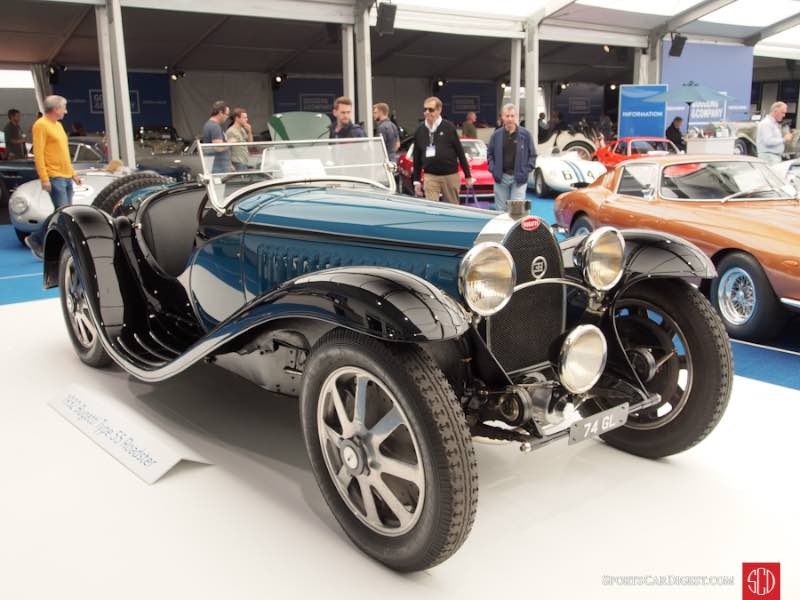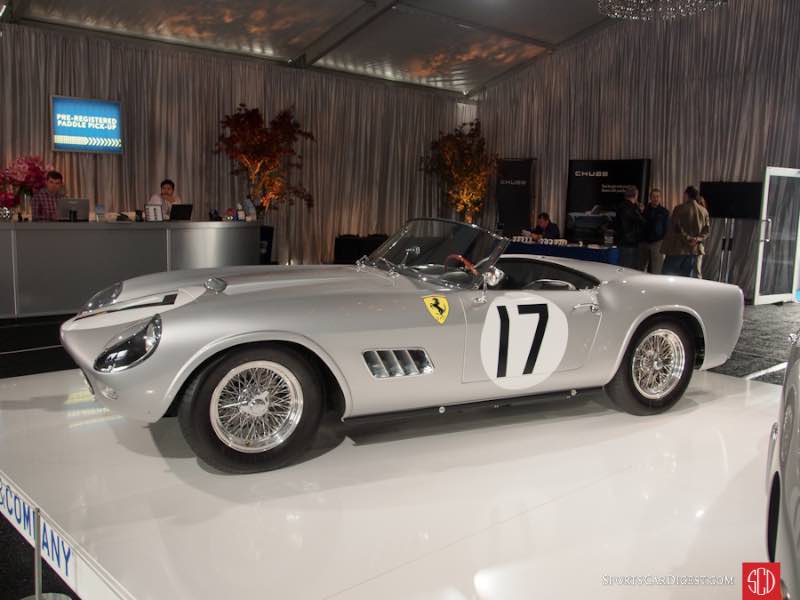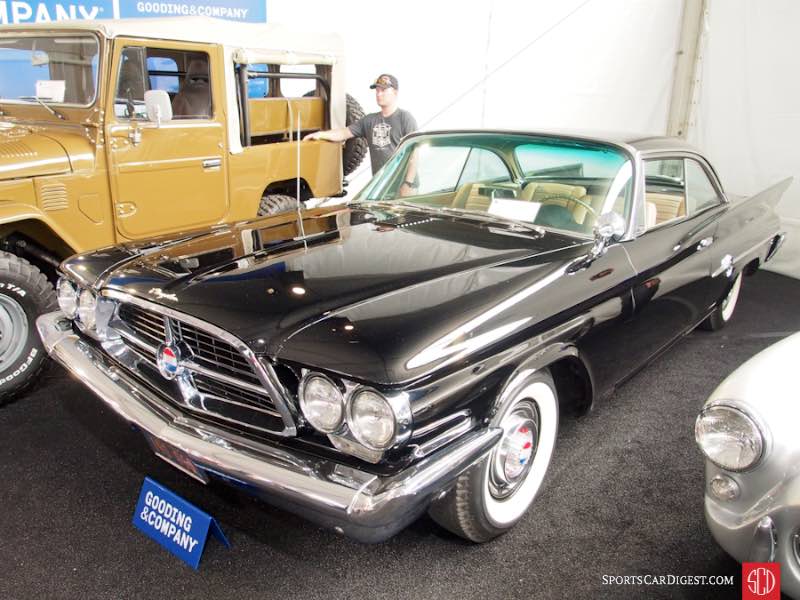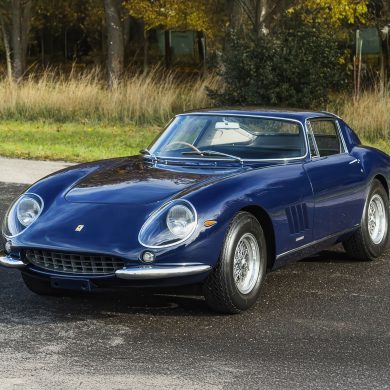Samuel Clemens is best quoted noting, “The report of my death was an exaggeration.”
So, too are reports of the death — or at least the incipient demise — of the collector car market in the wake of the Monterey Classic Car Week 2016 auctions.
With a little illumination, the numbers tell a quite different story.
There were five auctions in Monterey. They comprised eleven sessions (one day for Bonhams, two days for RM Sotheby’s in its constricted-by-construction Portola Plaza location, three days for Mecum and Russo and Steele and two days for Gooding at Pebble Beach) on four consecutive days from Friday through Sunday.
Here are the summary numbers for those five sales over the last four years:
[table id=160 /]
Last year RM Sotheby’s had an extra Thursday session with 25 cars from the Pinnacle Portfolio that added $75.5 million to the week’s total. The 2015 week total without Pinnacle would have been $318.3 million.
In 2014 Bonhams had the Thursday Maranello Rosso collection with the $38.1 million Ferrari 250 GTO; the collection added $66 million to the week’s total. Without Maranello Rosso the 2014 week total would have been $388.2 million.
Over the past four years the number of cars offered has remained steady. The sale rate, moderated by the large number of modestly priced cars at Mecum and Russo and Steele, has bumped along within a few points of 60% but in 2016 is at its lowest in years (including comparable years pre-2013 through Mecum’s 2010 arrival.)
And while interest in 2016 focused on eight-figure cars (there were eight pre-sale low estimates over $10 million) only six cars were sold for hammer bids over $10MM, and two of them were “Refer Department” or “On Request” estimates not included in the eight mentioned. They accounted, however, for a total of $90 million in successful high bids, the highest in Monterey auction history. That is more than in either 2015 including the Pinnacle Portfolio or 2014 including the Maranello Rosso collection and Ferrari 250 GTO.
All the eight-figure cars sold on hammer bids below their low pre-sale estimates, a below estimate range performance that is consistent with the rest of the Monterey auctions where 70.4% of the cars (at the Bonhams, RM and Gooding catalog auctions) with estimates changed hands on hammer bids below low estimate. Only 7.6% of the catalog auction cars sold were at hammer bids over their pre-sale high estimates, continuing a moderating trend over the last four years.
The growing gap between estimates and successful hammer bids are a sign of a slowing collector car market:
• After years of fairly predictable appreciation consignors have exaggerated expectations of ‘market value’;
• They are making decisions to consign three to six months before the auction and then looking over their shoulders at outdated trends a year or more before that in setting reserves;
• Auction companies, competing aggressively for quality consignments, are tempted to accept consignments with optimistic reserves and cataloging them with even more optimistic estimates to placate consignors;
• More than a few cars in Monterey turned over within months of being acquired in other auctions, most with little or less than nothing to show for it;
• A few favored marques and models continued to flood the market, e.g., Porsche 911s of all stripes and Ferrari 308s, their Monterey results reflecting an overhang of supply on limited demand for cars that were not produced in anything remotely described as ‘limited production’;
• The flood of cars at the top of the market (70 lots had low estimates of $1MM or more, 60 lots (not all estimated at >$1MM) sold on hammer bids of $1MM or more) suggests that consignors are recognizing the market is in general terms at or close to an inflection point and hurried to try to capitalize [literally] on historically generous values.
Through all of this, however, there is no catastrophic shift in values of sound, quality collector cars. Values may be off a little from recent years’ peaks, but not a lot, and there were enough recently traded cars changing hands in Monterey within ten or twenty percent (up or down) of their prior transaction values to support that observation.
That is, even though the Ferrari 250 GT LWB Alloy bodied California Spider that brought $18,150,000 at Gooding sold in the same venue in 2010 for $7,260,000 (both with buyer’s commission included.) XKD501, the Le Mans winning D-Type at RM Sotheby’s, last sold at Christie’s in London in 1999 – in about the same condition it was at Monterey – for £1,706,500, $2,810,627 at the time and only a little bit less (about $2.2 million) in today’s Brexit-enhanced dollars.
There will always be lightning strikes at auctions where bidders get competitive and throw caution (and reason) to the winds. Monterey saw its share:
• Gooding’s 1960 Chrysler 300F 4-speed, sold at Gooding’s Amelia auction in 2013 for $236,500, then changing hands here for a thumping $440,000 including commission;
• RM Sotheby’s 1982 Aston V8 Vantage ‘Oscar India’ sold for $132,000 in Arizona in 2015 and bringing [an under low estimate] $357,500 here;
• Bonhams sublime 1904 Mercedes-Simplex sold for £265,500 ($427,192 then, $345,200 at today’s exchange rate) at Brooks in London in 1999, an LBVCR star that brought $2,805,000 here, not bad for a vehicle once used for hauling pig swill, and my favorite Monterey example of why the antique car market is far from moribund, let alone dead.
It could go on and on — there were 1,253 cars at the Monterey auctions and something like 350 of them, 27.9%, had prior auction appearances — but there is far more detail in all its variety to follow in the individual auction reports.
The bottom line, though, is that despair and gloom are misplaced in the context of Monterey.
Mark Twain lived another thirteen years after the New York Journal reported his imminent demise.
[Source: Rick Carey]


















